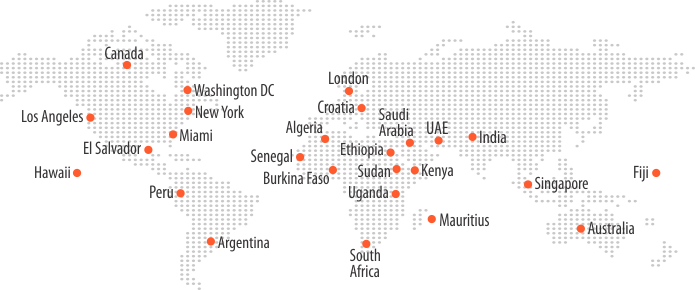Telcos: Transforming Communication & Fuelling Smart City Ecosystem

“Smart City” has become vernacular, and everyone is talking about it. Governments across the world are vying to develop “Smart Cities” in their countries. Asian country China has committed 8 billion US dollar for Smart city development and India has plans of developing 100 smart cities, in the pipeline. The smart city market size is estimated to grow from USD 312.03 Billion in 2015 to USD 757.74 Billion by 2020 at an estimated CAGR of 19.4% from 2015 to 2020. A host of things will come to mind when we say smart city. However, the definition of a “Smart City” in the current times has evolved. It is no more just about infrastructure and community places or architecture.
Today a smart city is the one that marries the traditional infrastructure like buildings, transportation, utilities, etc., with a modern communication infrastructure.
Such a city fuels sustainable economic growth and enables a cohesive and connected environment. It allows people to communicate faster and effectively, thus a high quality of life, for its people.
Factors that make Telcos smart city enablers:
- Telco owned wired and wireless infrastructure
- Reach to remotest areas
- Ability to connect various elements in a city and create an ecosystem that is cohesive and intelligent
- Ability to promote higher mobility
- Potential to translate IOT opportunities
- Ability to be the harbinger of latest technologies like 5G and LiFi
The reach of Telco’s to even the remotest areas can be a great enabler, provide a base for better interaction of people, places, and other elements, thus become the lifeline of a City that is forward facing towards becoming a smart city.
Telco Driven Connectivity and Communication
The telecom sector plays a crucial role in establishing modern communication solutions and infrastructure to transform a city into a Smart City. As the telecom industry owns wired and wireless infrastructure, it also enjoys a key position in the value chain. Also, IOT (internet of things) is one of the most vital subset of the “Smart City concept” and Telcos are the best positioned to translate IOT opportunities.
From the position where they own the wired and wireless infrastructures, Telcos have the power to boost connectivity via Voice, SMS & Data, to create an ecosystem that is more cohesive and intelligent. They can add intelligence to a city’s infrastructure, buildings, energy, environment, etc. and drive the Internet of Everything wave.
Deployment of information and communications technology along with sophisticated devices with sensors and cameras and other information collection functionalities can be leveraged hugely to improve transportation, public safety, healthcare facilities, utilities, and education. Cities can have greater opportunities to connect, collect and analyze data for designing and deploying improvements. Here again, the reach of Telco’s to even the remotest areas (last mile connectivity) can be a great enabler, provide a base for better interaction of people, places, and other elements, thus become the lifeline of a City that is forward facing towards becoming a smart city.
Click here to view full Infographic
Meeting the needs of the present, with a promise for the future: LiFi & 5G visible light communication systems
Light fidelity is an exciting concept that is gaining a lot of traction. LiFi driven 5G visual light connectivity systems are the future of wireless, and Telcos need to be prepared for this phenomenon. With LiFi, the space that is lit up can gain access to connectivity. As compared to WiFi, LiFi will take connectivity to the next level in terms of security and speed.
A mutually beneficial scenario!
Telco’s and smart city deployments are positioned to be mutually beneficial to each other. While the Smart City wave will create a host of opportunities for the industry, the importance and role of wireless carrier investment in smart cities also, cannot and should not be underestimated. According to Mind Commerce a research and analytics firm “There are significant opportunities for global wireless carriers in Smart Cities, Homes, and Solutions in the areas of LTE-Advanced, M2M, IoT, and Connected Devices, Big Data and Analytics as well as a vast number of applications.”
Towards the Realisation of a Smart City:
Connectivity is most vital in enabling interaction amongst elements in a Smart City, hence a focused effort to deploy wireless connectivity including cellular and Wi-Fi is central to networking a city and a key enabler of end-to-end mobility. Implementing IOT systems and supporting infrastructure, secure bi-directional communication, and taking local services onto the internet, leads to good governance, easy communication, a cohesive society and high standard of living thus to the realization of this idea of a Smart City.
Data Sources:
www.urenio.org
www.marketsandmarkets.com






